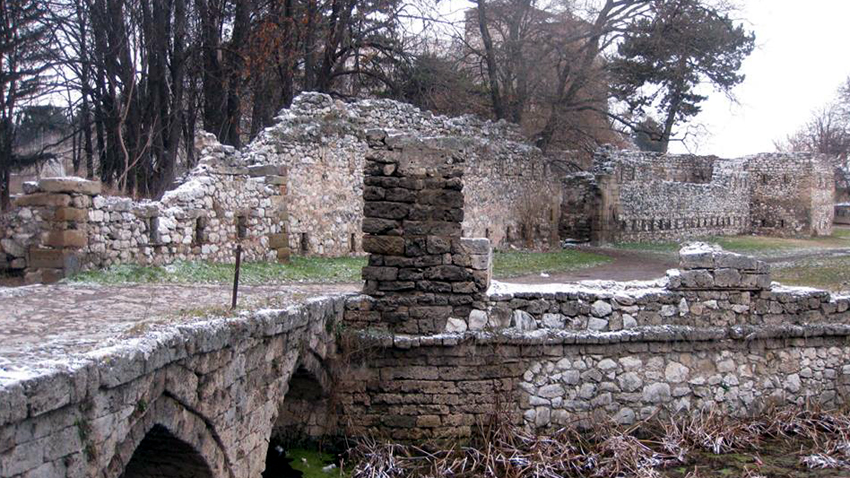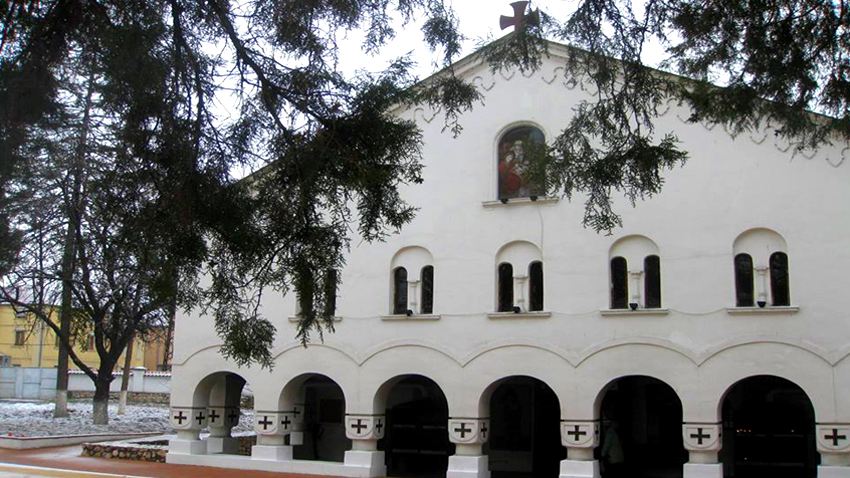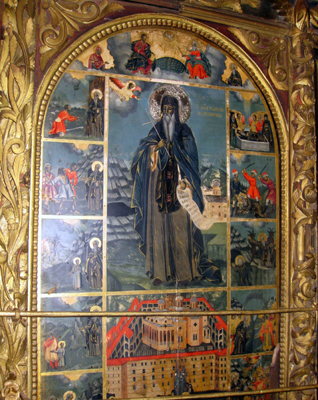Situated close to the Bulgarian capital city of Sofia, the town of Pirot in neighboring Serbia has been recently turning into a popular destination. The town offers a number of attractions for tourists and the characteristic hospitality of the open-hearted locals creates a unique and pleasant atmosphere. Most of the visitors prefer spending time at the Pirot marketplace on Saturday where one can buy delicious locally-produced cheese and meat. Nearby the most delicious Gurmanska Pljeskavica (a type of meat dish) is served. Romantic walks along the Nishava River can awake long-forgotten feelings but we went to Pirot in search of the Bulgarian heritage.

“Before Bulgaria's Liberation from Ottoman rule, the history of Pirot was entirely linked to Bulgaria. There was no Serbian influence there until the 19th century. It is believed that in the 9th century after 809, when Khan Krum conquered the territories of present-day Sofia, he also conquered the region of Pirot. During the Middle Ages, Pirot was considered part of the western Bulgarian lands, and at certain times of expansion, even part of central Bulgaria. That is why all medieval monuments you see here are very closely related to Bulgaria," tour guide Volen Antov explains, adding:
"There is not much information about the medieval history of Pirot. But there was an interesting moment during the time of the Bulgarian National Revival period when the Serbian army entered the territory in 1878 during the Liberation War. Then there was something of a recommendation coming from the Serbian rulers that the Bulgarians in Pirot should be enlisted as Serbs. They naturally refused. Metropolitan Eustatius, spiritual leader of the Bulgarians from Pirot, said his congregation consisted of pure Bulgarians. Subsequent reprisals against the Bulgarian population started after that. Metropolitan Eustatius was imprisoned and tortured, but then released under Russian pressure.”
What are the tourist sites in Pirot that are of interest to Bulgarian visitors?
"There is the medieval fortress which in its present shape dates back to the 14th century and is called Momchilov Grad. It is the symbol of Pirot and is strongly associated with the Bulgarian heritage. Bulgarian Momchil was a legendary hero who was active in the area of the Aegean and the Rhodopes, but the legend says he also ruled Pirot and that is why the fortress is called Momchilov Grad. This is a very well-preserved medieval fortress but, unfortunately, poorly maintained," Volen says.

Over the centuries, Pirot used to keep an active connection with the Bulgarian town of Chiprovci in the Balkan Mountain. The two towns were known for their masterful carpet makers and used to be located on a busy road used by merchants from Dubrovnik. Here in Pirot, traders from all over the Ottoman Empire bought the famous Chiprovtzi carpets and brought them to Bosnia, Montenegro, Skopje, Thessaloniki, and Istanbul. Today local traditional hand-woven carpets can be seen in the local museum of Ponisavlje.

 Before you leave the town you should definitely visit two entirely Bulgarian churches. The Church to the Nativity of Christ ("Rojdestvo Hristovo"), known as "the old church", was built in 1834. The other one to the Assumption of Mary ("Uspenie Bogorodichno") dates back to 1870. In them you can see icons by masters of the Samokov iconographic school in Bulgaria - Nikola Ivanov Obrazopisets - one of the brightest representatives of the Samokov art school and his father Ivan Nikolov Ikonopisets. In the Nativity of Christ Church where Ivan Ikonopisets worked, one can see a unique icon of the heavenly patron of Bulgaria - Saint Ivan Rilski (John of Rila).
Before you leave the town you should definitely visit two entirely Bulgarian churches. The Church to the Nativity of Christ ("Rojdestvo Hristovo"), known as "the old church", was built in 1834. The other one to the Assumption of Mary ("Uspenie Bogorodichno") dates back to 1870. In them you can see icons by masters of the Samokov iconographic school in Bulgaria - Nikola Ivanov Obrazopisets - one of the brightest representatives of the Samokov art school and his father Ivan Nikolov Ikonopisets. In the Nativity of Christ Church where Ivan Ikonopisets worked, one can see a unique icon of the heavenly patron of Bulgaria - Saint Ivan Rilski (John of Rila).
While in the church, an elderly man rushes inside, praying and crying, and telling everyone spiritual poverty is worse than material poverty, asking them to turn their eyes towards God. Another local man invites us to visit the church to Saint Nicolas in the nearby village of Staničenje where pieces of the shroud of Bulgarian King Ivan Alexander are kept to this day and says: "The history of these lands is neither Bulgarian, nor Serbian. This is our common Balkan history."
English: Alexander Markov
Photos: Miglena Ivanova
For the 30th consecutive year, the Bulgarian Posts organize a contest for the most beautiful letter to Santa Claus. Letters must be sent by 18 December with a stamped envelope "For Santa", the sender's address indicated and postage paid. All..
The Varna Regional Library "Pencho Slaveykov" has acquired a humanoid robot. It was unveiled by the library's director, Radka Kalcheva, during the celebration of the 20th anniversary of the library's American Corner, in the presence of Eric Brasel, the..
1000 participants will take part in the first Burgas Half Marathon, which will take place this Sunday, 24 November. The event will bring together amateurs and professionals of different ages who will compete in three distances - 1 km, 10.5 km and 21 km...
According to the Annual Report on the Health Status of Bulgarian Citizens for 2023, t he main cause of death in Bulgaria is diseases of the..
At the Bulgarian Embassy in London, Prof. Bettany Hughes presented excerpts from the new BBC series - Wonders of Bulgaria. Prof. Bettany..
Over 3.5 million Ukrainians have arrived in or passed through Bulgaria since the beginning of the war. Nearly 200,000 people have found temporary..

+359 2 9336 661
